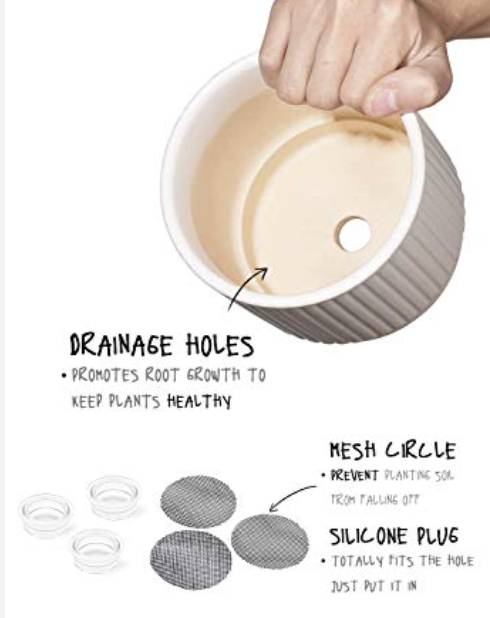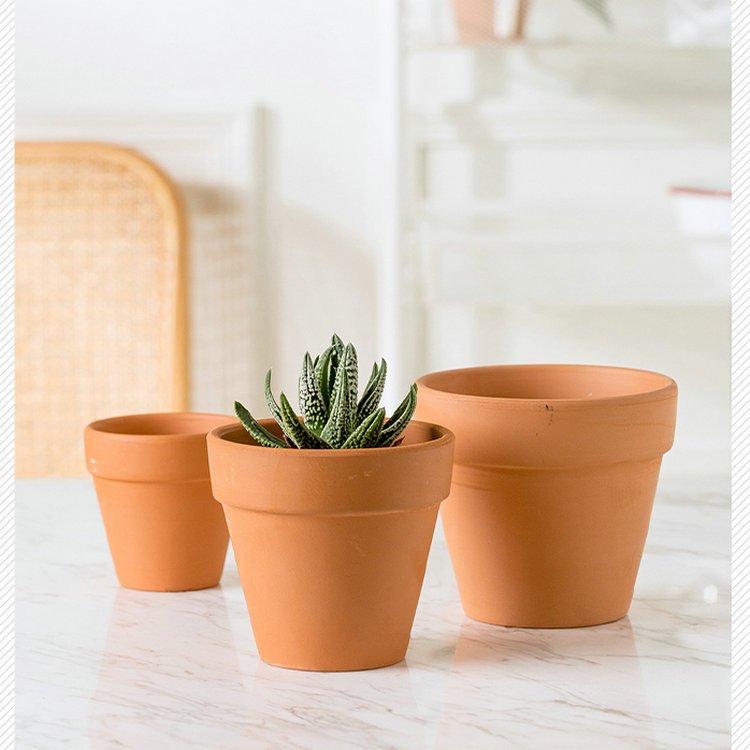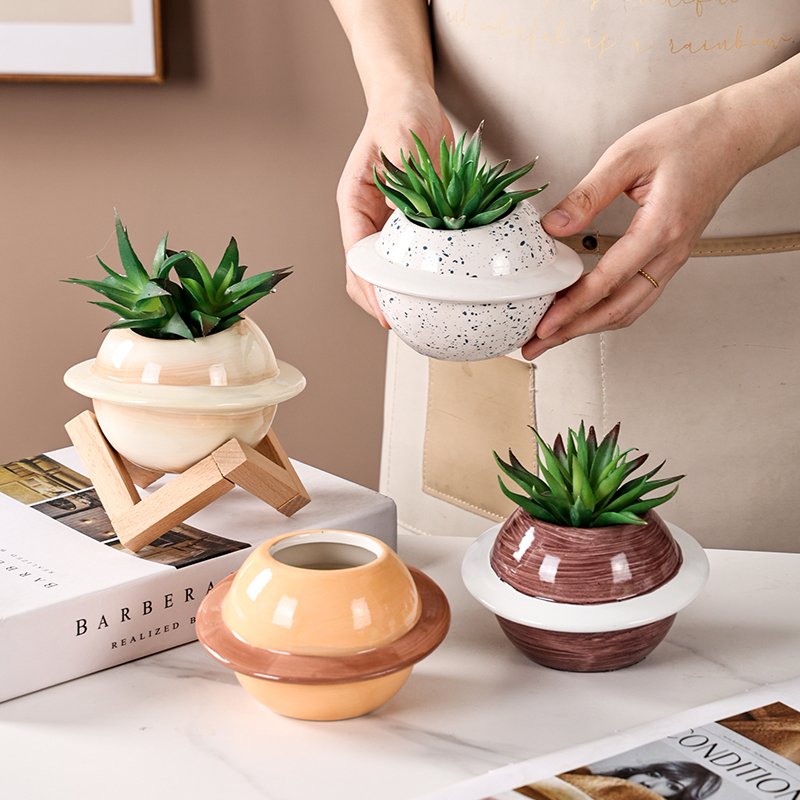Succulents are among the easiest plants to care for, but their success depends on choosing the right planter. The wrong pot can lead to root rot, poor growth, or even plant death. So how do you pick the perfect ceramic planter for your succulents? This 4-step guide will walk you through everything you need to know.
Step 1: Prioritize Drainage for Healthy Roots
One of the biggest mistakes succulent owners make is choosing a planter without proper drainage. Succulents store water in their leaves, meaning they need well-draining soil and a pot that allows excess water to escape.

Why Drainage Holes Matter?
When water sits at the bottom of a planter, it can suffocate the roots and lead to root rot, one of the most common issues with succulents. That’s why ceramic pots with drainage holes are the best choice.
- If you love a ceramic pot without holes: You can still use it, but you’ll need to be extra careful with watering. Consider placing a layer of pebbles at the bottom or using a nursery pot inside the decorative planter to control excess moisture.
Step 2: Pick the Right Size and Depth for Growth
The size of the pot plays a crucial role in the health of your succulents. Here’s what to keep in mind:
| Pot Size | Best For | Why It Works? |
|---|---|---|
| Small (2-4 inches) | Mini succulents like Echeveria, Haworthia, and small cacti | Prevents overwatering by limiting soil volume |
| Medium (4-6 inches) | Medium-sized rosettes like Aloe Vera and Jade Plants | Allows space for root expansion without overwhelming the plant |
| Large (6+ inches) | Succulent arrangements, trailing varieties like String of Pearls | Supports multiple plants and deeper root systems |
A pot that is too large holds excess soil, which can retain moisture for too long and cause root rot. A too-small pot can restrict root growth and stunt the plant.
💡 Pro Tip: Choose a pot that’s 1-2 inches wider than your succulent to give it just the right amount of room to grow.
Step 3: Consider the Ceramic Type and Finish
Ceramic planters come in different finishes, and the type of ceramic you choose impacts how well your succulents thrive.
- Unglazed Terracotta: The best choice for succulents because it’s breathable and absorbs excess moisture.
- Glazed Ceramic: Holds moisture longer, making it better for plants that require more hydration. If using for succulents, water less frequently.
- Porcelain: Aesthetic and stylish but often lacks drainage holes. Use a plastic inner pot or place rocks at the bottom.
🔍 Which to Choose? If you tend to overwater, go for unglazed terracotta to wick away excess moisture. If you prefer a decorative look, a glazed ceramic pot can still work, as long as you monitor watering carefully.
Step 4: Match the Style to Your Space
A ceramic planter is more than just a home for your succulent—it’s part of your home decor. Consider these factors when picking a style:
- Modern & Minimalist → White or pastel glazed ceramics
- Rustic & Natural → Unglazed terracotta or textured clay pots
- Boho & Eclectic → Hand-painted or patterned ceramic planters
- Industrial & Urban → Dark-toned matte ceramic with geometric shapes
🌱 Example: A matte white ceramic planter looks sleek in a modern home, while a hand-painted blue ceramic pot adds charm to a Mediterranean-style patio.
FAQ: People Also Ask
1. Do succulents need deep or shallow pots?
Most succulents prefer shallow pots because their roots don’t grow very deep. However, trailing succulents like String of Pearls benefit from deeper pots.
2. Can I use ceramic pots for succulents without drainage holes?
Yes, but you must be cautious with watering. Using a nursery pot inside or adding a layer of pebbles can help manage excess moisture.
3. What’s the best soil for succulents in ceramic pots?
A well-draining cactus and succulent mix works best. You can also mix regular potting soil with perlite or sand for better aeration.
4. Are glazed ceramic pots bad for succulents?
Not necessarily. Glazed ceramic retains moisture longer, so if using one, allow the soil to dry completely between waterings.
5. How do I prevent overwatering in ceramic pots?
Use a pot with drainage holes, water only when the soil is dry, and avoid pots that are too large.
Final Thoughts
Choosing the right ceramic planter for succulents is all about balance—proper drainage, the right size, and a material that supports healthy root growth. Whether you go for an earthy terracotta pot or a sleek glazed ceramic planter, keeping these factors in mind will help your succulents thrive.
For global garden brands looking for high-quality ceramic planters, Hale is a trusted manufacturer in China, offering OEM & ODM services tailored to your needs. 🌱✨




